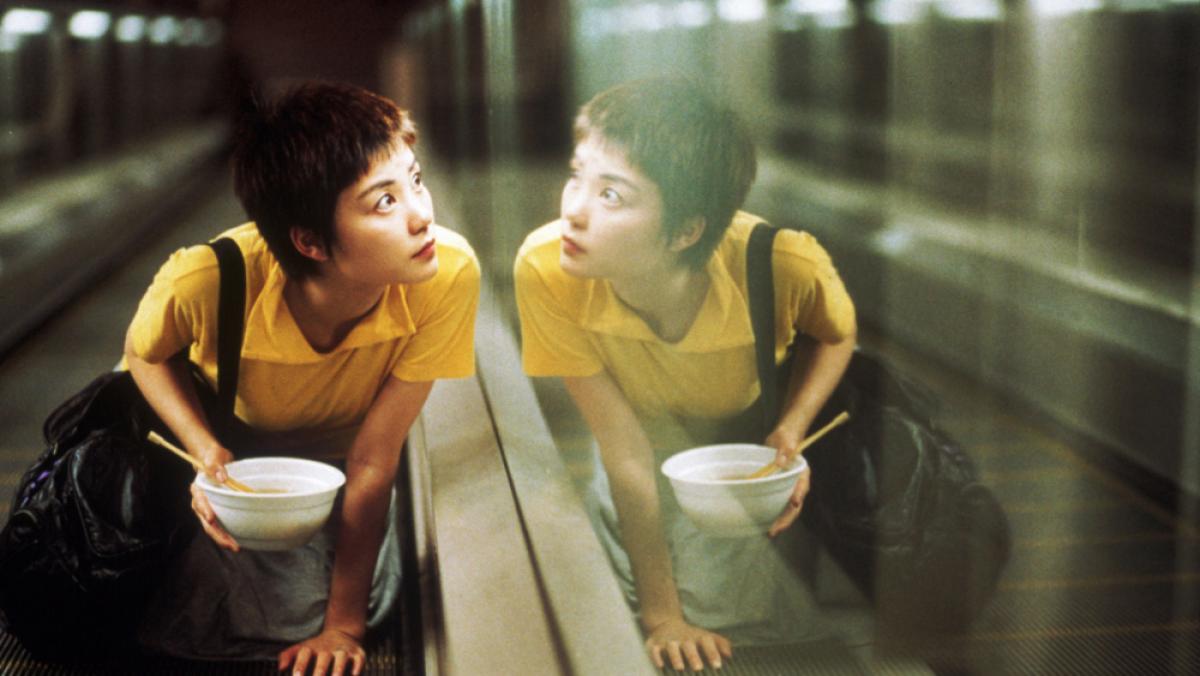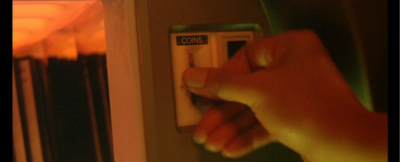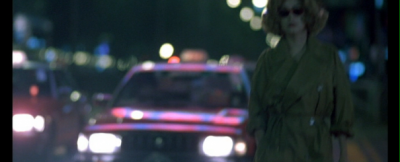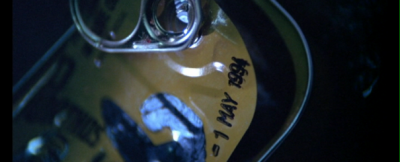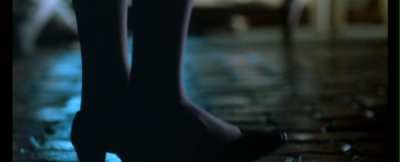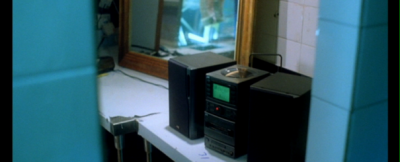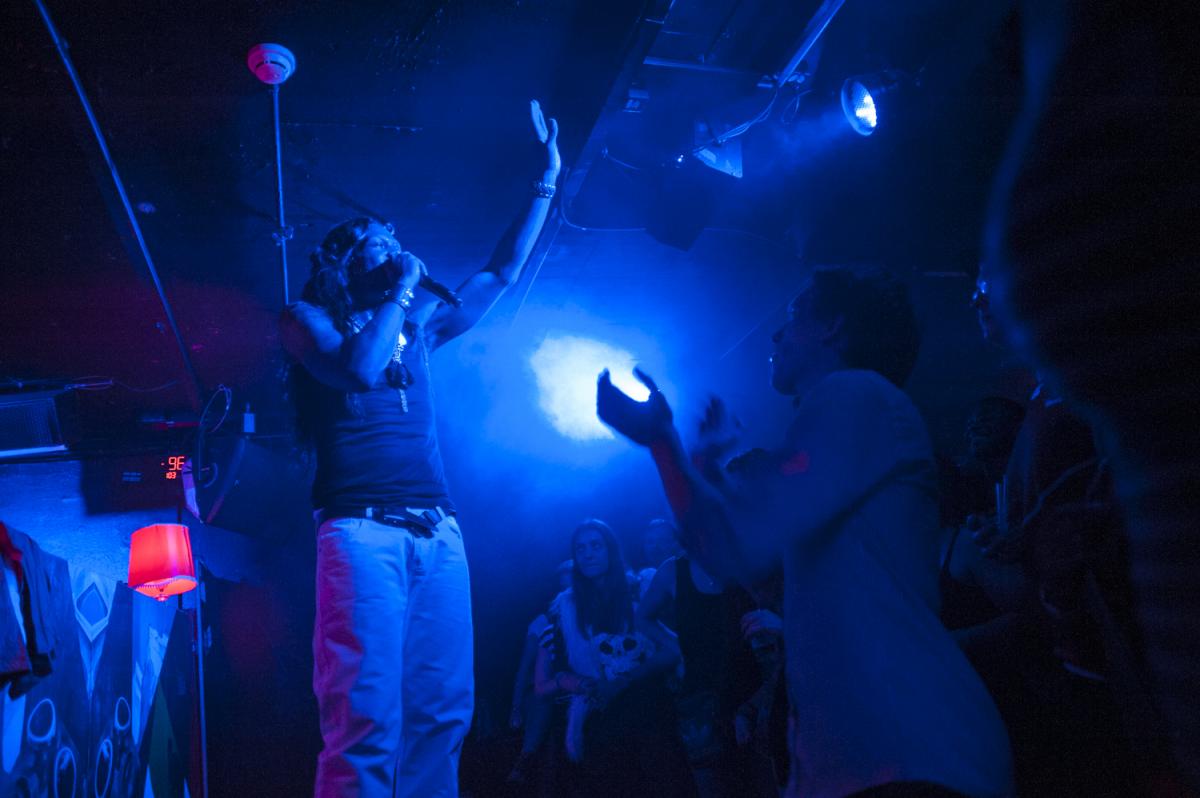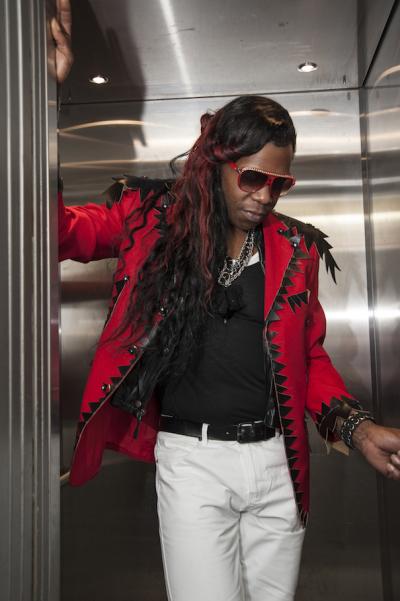Introduction
«Was it really alright for one’s dreams to come true so easily?» Murakami Haruki’s narrator asks in his short story, On Seeing the 100% Perfect Girl One Beautiful April Morning (Murakami 1993, 71). This quote from a simple three-page tale inspired Wong Kar-wai’s 1994 film Chungking Express (Teo 2005, 50). The film, like the short story, emphasizes that life is a string of chances to which we react. Apprehension about chance, change, and the future permeated Hong Kong at the time of the film – in three years, Great Britain would return control of the city to mainland China. Wong grasped this apprehension and wove it into his film’s dual narrative. Many scholars (Teo 2005; Abbass 1997; Huang 2002) have analyzed Wong’s manipulation of time, space, and chance in Chungking Express via narrative and visual analysis. Teo’s argument is particularly perceptive. He notes that Wong makes time tangible via expiring objects – soap, canned pineapple, old rags (Teo 2005, 63). Life, Wong seems to be saying, is also about expirations. The soundtrack, mostly consisting of popular songs of decades past, reinforces this notion of expiration and hints at nostalgia (Teo 2005, 53-54). But more important than the fact that Wong selected old songs is the way the music appears in the soundtrack. Throughout Chungking Express, music moves between onscreen, offscreen, and nondiegetic space. I argue that this indeterminate positioning of music in cinematic space reinforces the film’s final theme – the future is unwritten.
Sound and Indeterminacy in Chungking Express
Before looking at specific examples of this phenomenon, we must couch Chungking Express in its historical and cultural context. The golden age of Hong Kong cinema was drawing to a close by the time Wong began filming Chungking Express, (Teo 1997, vii). Genre films, particularly kung fu, melodrama, and gangster movies dominated the industry’s output, though in the eighties a new wave of directors began challenging generic boundaries. Despite the international ascendancy of Hong Kong stars like Jackie Chan and Chow Yun-Fat, Hollywood dominated the home box office (Teo 1997, vii). An economic downturn and trepidation over the transfer of sovereignty also contributed to the industry’s decline. The transfer also provided a glimmer of hope; expansion into the Chinese mainland could resuscitate abysmal sales, yet rigid state censorship laws tempered this hope (Teo 1997, ix). It was in this setting that Wong conceived and shot Chungking Express over a three-month period in the midst of working on his epic martial arts film Ashes of Time (1994) (Teo 2005, 8). Chungking Express, though set in Hong Kong, breaks with the local film industry's generic models.
Wong’s characters, like those in the Murakami story, identify chance moments in life and struggle to act on them. The film is a dual-narrative, what Teo calls a diptych, though both stories feature policeman protagonists and characters from the second story appear in the background of the first. The first narrative is a noire drama set in an area of Hong Kong called Chungking Mansion – an arcade-like hub for multi-cultural families, small businesses, and criminal activity (Teo 2005, 50-53). It follows the intersecting lives of a drug-smuggling blond (Brigitte Lin) and a lovelorn policeman designated as Cop 223 (Takeshi Kaneshiro). The second story is an off-the-wall romance: Cop 663 (Tony Leung) has been dumped by his stewardess girlfriend. Encouraged by this, a quirky counter girl (Faye Wong) at a fast food place called Midnight Express sneaks into Cop 663’s apartment and transforms both the apartment and his life.
French film sound scholar Michel Chion’s extensive work provides an ideal platform for understanding how sound works in Chungking Express. Unlike many film music scholars, Chion does not limit his discussions to the score. Instead he deals with how the entire soundtrack – sound effects, dialogue, and music – interacts with a film’s visual elements, and how sound can transform our perception of the images. Chion’s definitions of the aforementioned terms, now commonly accepted in film sound circles, are laid out in Film, a Sound Art:
onscreen sound: a sound whose source we see (or believe we see) in the image at the moment the sound is emitted.
offscreen sound: a sound whose cause is not visible simultaneously in the image but that we easily imagine to be still situated in the same time as the action onscreen and in a space that’s contiguous to what’s shown in the image.
nondiegetic sound: sound emitted from an invisible source that in addition belongs to a time and/or place different from the space-time of the action shown in the image (2009, 249-250).
He relates that when we hear a sound but do not see its source, the sound is acousmatic (Chion 2009, 465). In Chungking Express, music is acousmatized. We are often uncertain if the music is diegetic or nondiegetic. This narrative indeterminacy regarding sound corresponds to the aleatoric nature of life and the uncertainty of the future in general and of Hong Kong in particular.
As seen in the music cue chart at the conclusion of this article, popular songs dominate the soundtrack in both stories, particularly «Things in Life» by Dennis Brown in the first and «California Dreamin’» by the Mamas and the Papas in the second. «The song», Chion points out, «is what often creates a link between individual characters’ destinies and the human collectivity to which they belong» (Chion 2009, 428). In the case of Chungking Express, songs do this and more; they do create a link between the characters, but via their delivery as indeterminate sound sources, they also create a link between time as experienced by the characters, and, by extension, the future of Hong Kong. «Things in Life» and «California Dreamin’», emitted from a juke box and radio respectively, are «on-the-air» (Chion 2009, 482). They seem to be anchored to a specific space, but «they shift easily from the status of screen music to pit music» (Chion 2009, 482). Because of this shifting, these songs compel us to constantly revise our understanding of how the music is working in the scene. Are the songs merely aural settings? Do they express a character’s psychology? Do they portray a relationship between characters? Can they simultaneously do all this and more?
The songs compel us to revise our understanding of what is real and what is imagined.
«Things in Life» and Forging Fate
«Things in Life» appears four times in approximately the first forty minutes of the film. Initially, it is associated with the jukebox at the Bottoms Up bar and by extension, with the bar’s owner/drug boss (played by the cameraman Christopher Doyle). When the tune is first associated with the drug boss and his bartender-lover (a different woman who occasionally dons a blond wig herself), the music is diegetic, contained within the machine. It is stuck in a tedious, mechanical reality; symbolically it hints at the trope of mechanically reproduced music and the «murderous impulse» (Chion 2009, 434).
Indeed, the second time the song appears, Brigitte Lin’s character has just received a death sentence from the drug boss via a can of sardines-she has until the expiration date on the can to recover some stolen goods. But this time «Things in Life» occurs as diegetic offscreen sound. That is, the music is playing in the bar, but we do not see the jukebox. With its source concealed, the music enlarges the film’s spatiality-we hear beyond to frame. The music gives dimension to space outside the ocular. It opens up possibilities.
The song continues, smoothing over a cut to Brigitte Lin’s character wandering the streets of Hong Kong. By this point, the music has clearly traversed the diegetic space and time of the bar and entered into the nondiegetic. The function of the music thus changes from that of portraying space (the bar and the drug boss who seemingly resides there) to portraying emotion. The song lingers in the blond-wigged woman’s mind as an aural memory. We speculate that it represents her now-over romantic relationship with the drug boss, but nothing is certain. The lyrics comment on the idea that nothing is certain in relationships and in life, stating that «It’s not every day we’re gonna be the same way.» The line echoes a voice-over by the blond-wigged woman, in which she explains why she wears both a raincoat and sunglasses: «You never know if it’s going to rain or be sunny.»
In this sequence the song acts as a sound bridge between the blond-wigged woman and Cop 223 – the music smooths over a cut to Kaneshiro’s character eating a McDonald’s hamburger on a street corner. By connecting Lin’s character with Kaneshiro’s, the music predicts their chance meeting. The second line of the song, «There must be a change somehow», seems to encourage both Cop 223 and the woman to become active rather than passive agents in life. By moving from diegetic music to nondiegetic music, first empathizing with the woman and then with the cop, the tune becomes as free-floating between emotional representations as it is with spatial ones.
«Things in Life» returns twice more in the first story. In its third incarnation, it appears as diegetic sound, accompanying shots of the jukebox and the bartender dancing. The final time we hear the song, it begins with a similar scene. This time the camera follows the drug boss as he exits the bar, but as he leaves the music does not fade. «Things in Life» does not situate itself from his point of audition. Instead of being muffled, the music rises in volume, indicating that the song has once again crossed the boundary between diegetic and nondiegetic sound. The woman in the blond wig shoots the drug boss and the music fades as the camera shows a close-up of the can of sardine and its expiration date-the «today» in the narrative – May 1, 1994.
Via this shot, the music has been elevated beyond representation of any one character and instead comments on the expiration of all things in life, a topic that is at the heart of the opening, noir-ish chapter of Chungking Express. The sardine cans give time a tangible quality; they express the human desire to contain the future while the music declares that we can never truly know the future, i.e. whether it will rain or shine. The deft «on-the-air» delivery of «Things in Life» throughout the first vignette creates and dissolves links between characters. Moreover, it gives a voice to inhabitants both of 1994 Hong Kong and human beings in general – there must be a change somehow. And in order to enact that change, we must dream.
Dreams of Time and Space
The film’s two stories are tied together by Cop 223’s visit to Midnight Express, a sandwich shop. He notices Faye, a counter girl at the shop, and seems to be smitten with her despite the fact that she will fall in love with another man in a few hours (and despite the fact that he was hitting on Brigitte Lin’s character a few moments prior). For Cop 223, memories of romance are fleeting, more like dreams than fact. The past, when the concreteness of it (cans of pineapple, sardines) is consumed or rejected, becomes little different from the future. History is as mutative as the unknown future. Though facts cannot be changed, perception of the past can; in this, both the future and the past, Wong Kar-Wai suggests, are fantasies. It is through this idea that the music and the stories’ disparate narratives can be brought together.
Both Faye and her romantic interest, Cop 663, are in a kind of sleep-walking dream state. Like his colleague, Cop 663 wallows in the past. He talks to inanimate objects, infusing them with his excessive nostalgia for the woman who broke his heart. Faye, on the other hand, dreams not of the past but of a future. But the future is full of uncertainty; likewise the music associated with Faye is «on-the-air» – it floats between diegesis and nondiegesis, concomitantly expressing exterior settings and characters’ interiorities. Music shapes the second story from Chungking Express into a dream romance, a fantasy of the heart.
The Mamas and the Papas’ «California Dreamin’» exemplifies «on-the-air» music in the second story. It dominates the soundtrack, occurring eight times in the hour-long episode. Though ostensibly onscreen and diegetic in its first appearance, the song moves between onscreen and offscreen space, and arguably into the nondiegetic realm. The first time we hear the tune, it begins during Cop 223’s voiceover regarding Faye, as seen in the following excerpt (Chungking Express, «California Dreamin’»). What is never explained is how he knows Faye will fall in love with Cop 663 in exactly six hours. Cop 223’s voice shifts from an embodied character to an omniscient narrator. This curious transfer of Cop 223’s voice foreshadows the peculiar way «California Dreamin’» fluctuates between diegetic and nondiegetic sound in the second story:
Clip 1: Chungking Express, «California Dreamin'». Copyright Buena Vista Home Entertainment/The Criterion Collection 2008.
When the instrumental opening starts, we are uncertain of its origins; it could be nondiegetic accompaniment enhancing Cop 223’s bittersweet remorse at missing his shot with Faye. But, as the film cuts to Cop 663 we discover that the opening was a sound advance and that the music is indeed diegetic, though still as empathetic as any orchestral underscore. We still have not seen the source of the music as Cop 663 approaches the counter. The volume does not change with his approach. Instead it remains constant, just as the camera depicts a point of view shot seen from behind the shop counter. When we get a reverse shot, we realize that the music and previous shot were from Faye’s point of view and audition. Instantly, the music compels us to empathize with her. When Cop 663 arrives at the counter he orders a chef salad and the two have a brief conversation:
Cop 663: You like listening to loud music?
Faye: Yeah, the louder the better. Keeps me from thinking so much.
Cop 663: You don’t like to think?
Faye shakes her head «no» while dancing to the music
Cop 663: What do you like?
Faye: I’ll tell you when I find out. And what do you like?
Cop 663 beckons Faye closer. They both lean over the counter in a two-shot from the side
Cop 663: Chef salad!
Faye: Hey!
The above scene is noteworthy in that the music has a function – Faye turns the volume up to prevent her from thinking too much. An additional side effect from the loud music is that it also inhibits communication. Both Cop 663 and Faye have to shout to be heard over «California Dreamin’». The music is not just Faye’s shield from her own thoughts but also an aegis protecting her from the world. But the music’s volume decreases when Cop 663 motions Faye to attend to his reply. This change in volume is not diegetic; no one has actively turned down the offscreen boom box. Instead, this shift in the volume is a way of marking a shared auditory moment. It aurally creates a personal space for Cop 663 and Faye to share. This moment is the crux of communication between them enables the story’s narrative.
The lyrics and musical components of «California Dreamin’» are atypical of popular songs about California – there is no mention of beaches, bikini-clad girls, or convertibles. Rather the song suggests melancholic uncertainty. Additionally, the song is in a minor key; this mode is mutative; its sixth and seventh scale degrees change depending on the surrounding notes. This makes the minor key less stable than its major counterpart. The opening phrase’s deceptive cadence of V7-bVI (set to «…sky is grey/I’ve been for a walk…») contributes to a sense of harmonic uncertainty. The song concludes with a harmonically weak cadence of bVII-i. This progression lacks the tonally centering movement of a leading tone. It is ambiguous; just as Faye and Cop 663 are unsure of themselves and their futures, so too is the music of «California Dreamin’».
Throughout the second story, the song struggles to break away from its diegetic container, the boom box behind the counter at Midnight Express. In a jump cut following the first conversation between Faye and Cop 663, the music also cuts to a different point in the song. It does not smooth over an abrupt edit, the way music typically does. In dancing and mouthing the lyrics while performing her mundane tasks, Faye embodies «California Dreamin’». Faye, like Brigitte Lin’s character in the first vignette, appropriates a song and actively forges her own future.
The song is always connected to Faye’s presence, whether the sound source is visible or not. When we hear the song at Cop 663’s apartment, we recognize that Faye occupied this space aurally as well as physically. The music continues after she’s left the apartment – it is a musical memento for both her and for Cop 663. The song is part of her interior being, one that ricochets in Cop 663’s apartment and mind. Faye, like the song, defies containment. And it is through this defiance that Faye is able to leap from the uncertainty of «California Dreamin’» to the transformative fantasy of «Dream Lover».
Unlike «Things in Life» and «California Dreamin’», «Dream Lover» is never definitively placed as onscreen sound. Yet, like the preceding episodes, «Dream Lover» confuses notions of diegesis and nondiegesis, of reality and fantasy, in Chungking Express. This song, too, belongs to Faye and is even more strongly part of her interior soundtrack than «California Dreamin’». This interior empathetic sound is augmented by peculiarities on both material and semiotic levels. The recording, unlike the other pop songs in the film, is not the original version. Instead it has been transformed from the Cranberries’ alt-rock style into a Cantonese pop song (Chungking Express, «Dream Lover»). Faye Wong herself sings the lyrics, infusing the song with both her «real» pop star persona while simultaneously giving musical self-expression to her quirky Chungking Express character. Because of this, «Dream Lover» erases boundaries between fantasy and reality, manufacturing emotion and empathy on a level beyond the other music cues. The music video gives a sense of this effect.
Clip 2: The Cranberries, «Dreams». Island Def Jam Music Group, 1993.
Video not available anymore.
Clip 3: Chungking Express, music video for «Dream Lover». Copyright Buena Vista Home Entertainment/The Criterion Collection, 2008.
As a montage, this music smooths over edits that signify the passing of time. We are so absorbed into Faye’s fantasy world that the passing of days (weeks?) in Cop 663’s apartment seem to be a fleeting five minutes. Time is suspended. The joy of watching her in this sequence is the joy of her insouciance and naïve affection for Cop 663. Though she still cannot face him directly, she has clearly determined what she likes. The music of «Dream Lover» mirrors this certainty. It is the opposite of the insecure «California Dreamin’» in that is not ever part of the diegesis, excepting Faye’s own fantasy world.
The harmonic structure of the song is the most basic and most stable progression possible: I-IV-V-I. Likewise, the verse/chorus structure of the lyrics typifies pop songs and the major key implies a sense of optimism. The song’s aural simplicity is innocence and charm in musical form. Indeed there is hardly anything truly dreamlike embedded in the music. It is more a fantasy than a dream, a fantasy that has more substance musically than the songs in the «real» world of the film.
But the grain of Faye Wong’s voice, breathy and high-pitched, endows the audible with shades of dreaminess. The song’s bridge also portrays a kind of extraordinary dream world. The chords in the bridge oscillate between V/bVI to bVI. This harmonic movement is outside the realm of the diatonic key of the song, but its effect is notable. It is the same cadential movement present in «California Dreamin’» This progression ties the two musical facets of Faye’s personality together. The tonicization of the lowered sixth scale degree suggests a movement from one realm (the original key) to a different one (the key of bVI) in both songs. But in «Dream Lover», the absorption into a fantasy world is made more complete, thanks to the lyrics.
During the bridge, the lyrics move beyond the realm of logos to the realm of the ineffable – the singer no longer sings words, but rather a melismatic «la». It reflects a fantasy that cannot be uttered. Via the song’s connection to Faye (the character), we realize that this parallels her inability to express her feelings directly to Cop 663. When she is finally confronted with the opportunity to do so, she flees. Faye is still unable to reconcile fantasy and reality. She is afraid to share her dream.
Conclusion: Music, Optimism, and the Future
In the final scene of Chungking Express, Faye has returned to Midnight Express for a visit after a year-long trip around the world as an airline stewardess. She is surprised to find Cop 663 there renovating the space and listening to «California Dreamin’» on high volume. The song in its final appearance begins indeterminately. We see Faye’s heels and hear the tune – it could be diegetic or nondigetic.
We are unsure until Faye raises the storefront gate and the music increases in volume. Though we are still aligned with Faye’s point of audition, the song itself no longer represents her desires. Rather, its meaning has been transformed by Cop 663’s appropriation of it. For him, it represents Faye, adventure, hope, and change. It is his aural memory of her and the carefree joie de vivre she represents.
As the couple struggles to communicate, Cop 663 turns down the stereo’s volume. They are finally able to express their feelings directly, unmediated by music. Though the ending initially seems uncertain, with Faye writing out a boarding pass on a napkin for Cop 663, the music hints at an optimistic future. The final shot is of the boom box, the source of «California Dreamin’» in numerous scenes. But before cutting to the end credits, we hear the opening of “Dream Lover” in conjunction with this shot.
It is not actually playing on the boom box. Instead the sound advance suggests that the dream has been captured and transformed into a tangible reality. It is the climactic conclusion of a shared interior auditory moment that mirrors the moment in the first scene between Cop 663 and Faye.
Just as the characters traverse Hong Kong space so too does the music traverse between different orders of filmic space. Its indeterminacy contributes to the dissolution of spatial and temporal boundaries as well as the ones between dreams and reality; the music undermines the physical world and absorbs us into a murky world in which anything is possible. In this it mirrors the future of the city in which is set – nebulous, uncertain, torn between hope and reality. Music in Chungking Express reveals the uncertain atmosphere of 1994 Hong Kong and Wong Kar-wai’s cautious but optimistic dream for the future, a dream still unfolding almost twenty years later.
Music Cue Chart
| Time Code |
Scene Description |
Sound Description |
| 0:44-2:50 |
Inside Chungking Mansion, blurry shots of woman in blond wig and Cop 223. Title card. Shots of chimneys and sky. |
Opening theme: Synthesized strings and winds play cyclic tune. In Mansion shots, we hear the murmur of the crowd underneath the music. Thunder accompanies shot of the rooftops and sky. At 1:42 Cop 223 enters in voiceover. Nondiegetic. |
| 6:05-6:42 |
Bar interior, man puts coin in jukebox. Shots of jukebox and woman in blond wig. |
«Things in Life», onscreen sound. |
| 6:54-8:00 |
Woman recruits Indians to smuggle drugs, counts out money and prepares them for smuggling |
Indian popular music, Bollywood style. It seems to be offscreen, but is unclear. The text is not translated. |
| 10:13-10:58 |
Close quarters of smuggling operation, preparing clothing and shoes to be filled with drugs |
Indian music; it fades as woman approaches the airport ticket counter, suggesting that by this point the music is nondiegetic. |
| 12:31-13:26 |
Woman in blond wig and female bartender chat cattily. Woman leaves, walks Hong Kong streets in voiceover. |
«Things in Life» begins with scene in bar, as if onscreen but continues as woman walks, turning into nondiegetic. It fades as 223 exits McDonald’s and calls his pager. The music works as a sound bridge between the two characters. |
| 14:33-16:05 |
Woman in blond wig walks hallways looking for the hired smugglers. She kidnaps an Indian shop-owner’s daughter |
Opening theme |
| 16:40-16:43 |
Shop-owner ponders his conflict-betraying the smugglers or letting his daughter die |
Indian music in background, offscreen sound. |
| 17:18-17:39 |
Cop 223 chases a criminal in blurry scenes. |
Generic action music in synthesizer and voiceover. Nondiegetic. |
| 20:37-22:17 |
Woman in blond wig smokes alone in a hallway. Chase sequence after she shoots someone, blurry visuals. |
Indian music and gunshot; seems to be offscreen diegetic sound because of reverb. Nondiegetic drums rise in the soundtrack. Generic action music enters at 21:40 |
| 26:19-27:30 |
Cop 223 rests outside of Bottoms Up Bar before entering. |
Eighties-style hard rock music faintly heard while 223 is outside bar, heard while he is in bar bathroom. Offscreen sound accompanied by voiceover. The music transitions into a different style when he mentions the song “Love Dies at Dawn.” |
| 27:32-31:33 |
Woman in blond wig enters the bar, Cop 223 hits on her. |
Generic easy listening music with synthesizer and saxophone. Nondigetic. |
| 31:41-32:31 |
Drug boss puts coin into juke box and makes out with bartender while she wears a blond wig |
«Things in Life» onscreen sound. Rises in volume in conjunction with shots of the jukebox. |
| 33:52-38:40 |
Cop 223 eats hamburger, French fries, chef salad while woman sleeps. He polishes her shoes then leaves for a jog. |
Generic easy listening music. Thunder heard at 36:38. |
| 39:42-41:00 |
At the drug boss’s bar. The bartender dances by juke box. Woman in blond wig shoots the drug boss while kittens eat a can of sardines. The body lies on the ground. |
«Things in Life» begins as onscreen sound, becomes nondiegetic as it increases in volume when woman leaves. Ends with final shot of her. |
| 41:47-43:21 |
Faye runs into Cop 223 and music begins during his voiceover. Scene changes to night, Cop 663 approaches the counter of Midnight Express. |
Cop 223’s voiceover then «California Dreamin’» by the Mamas and the Papas. The music begins as nondiegetic (could also be interpreted as a sound advance) then becomes diegetic, switching between offscreen and onscreen sound. Song is cut off during musical interlude. |
| 43:22-43:59 |
Faye dances to «California Dreamin’» while working the counter. She pretends to sing. Cop 663 makes note in book. Midnight Express boss turns radio off. |
Cut from previous scene, but still «California Dreamin’». Assumed offscreen/onscreen sound. |
| 44:16-45:09 |
Faye turns the radio on, though a little quieter than previously. She dances while eyeing Cop 663. |
«California Dreamin’» onscreen/offscreen sound. |
| 47:35-50:00 |
Cop 663 voiceover about ex-girlfriend. Shots of them inside his apartment, they make love. |
«What a Difference a Day Makes» nondiegetic sound. |
| 50:43-51:23 |
At Midnight Express, Faye cleans while boss and 663 discuss ex-girlfriend and relationships |
«California Dreamin’» onscreen/offscreen sound. |
| 53:51-55:32 |
Faye working at counter, everyone leaves when Cop 663 approaches. |
«California Dreamin’» onscreen/offscreen sound. |
| 1:07:31-1:09:32 |
Faye breaks into Cop 663’s apartment and plays with his stuff |
| 1:10:55-1:15:12 |
Faye redecorates Cop 663’s apartment |
«Dream Lover», a Cantonese cover of the Cranberries’ «Dream» sung by Faye Wong. Music decreases at ex-girlfriend’s phone message. Nondiegetic. |
| 1:18:42-1:19:32 |
Faye and Cop 663 relax in his apartment. Cop 663 says his ex-girlfriend liked «California Dreamin’» though Faye knows the CD is one left by her. |
«California Dreamin’», it clips off as Faye falls asleep, aligning us with her point of audition. Onscreen/offscreen sound. |
| 1:21:21-1:21:29 |
Electricity has gone out at Midnight Express so everyone is lighting candles |
Workers sing «Happy Birthday» to Faye. Onscreen sound |
| 1:24:47-1:25:11 |
Faye cleans Cop 663’s apartment, tries to knock down stewardess shirt from clothesline |
«California Dreamin’» offscreen sound, but could be nondiegetic. |
| 1:26:06-1:28:29 |
Cop 663 approaches Midnight Express and requests letter from ex-girlfriend. He returns Faye’s CD of «California Dreamin’» and asks her out on a date. The scene cuts to her serving customers and then to him packing away ex-girlfriend’s belongings. |
«What a Difference a Day Makes», goes from nondiegetic to onscreen sound back to nondiegetic. |
| 1:28:59-1:31:35 |
Cop 663 waits in California Bar for Faye |
There is a brief saxophone cue, then Cop 663 puts money into the jukebox. Instead of a popular tune, we receive the generic easy listening music from the first story. Nondiegetic-the music is immersive rather than being sourced in the juke box. |
| 1:33:51-1:36:24 |
Rain pours on Faye’s letter to Cop 663; he rescues it and tries to dry it out. |
Generic easy listening similar to the previous entry’s. Music with synthesizer and saxophone. Nondiegetic. |
| 1:36:34-1:38:10 |
Shot of stewardess approaching Midnight Express. We discover it is Faye and that Cop 663 is behind the counter. |
«California Dreamin’» at first unclear if it is nondiegetic or offscreen sound. When Faye lifts the grating, the music becomes louder, proving that is diegetic. As they talk, Cop 663 turns down the music-the song goes from offscreen to onscreen. |
| 1:40:20-1:42:46 |
Shot of boom box at Midnight Express followed by end credits. |
«Dream Lover» nondiegetic |

